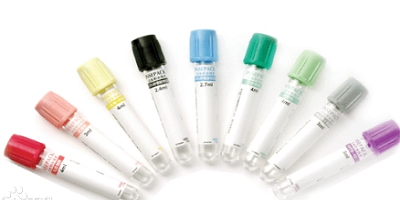Precautions for vacuum blood collection
1. Selection and injection sequence of vacuum blood collection vessel
Select the corresponding test tube according to the inspected items. The sequence of blood injection is culture bottle, ordinary test tube, test tube with solid anticoagulant and test tube with liquid anticoagulant. The purpose of this sequence is to minimize the analysis error caused by sample collection. Blood distribution sequence: ① sequence of using glass test tubes: blood culture tubes, anticoagulant free serum tubes, sodium citrate anticoagulant tubes, and other anticoagulant tubes. ② The sequence of using plastic test tubes: blood culture test tubes (yellow), sodium citrate anticoagulant test tubes (blue), serum tubes with or without blood coagulation activator or gel separation, heparin tubes with or without gel (green), EDTA anticoagulant tubes (purple), and blood glucose decomposition inhibitor test tubes (gray).
2. Blood collection position and posture
Infants and young children can take blood from the inner and outer edges of the thumb or heel according to the method recommended by the World Health Organization, preferably the vein at the head and neck or the anterior fontanelle vein. For adults, the median elbow vein, dorsum of hand and wrist joint without congestion and edema were selected, and the vein of individual patients was on the back of elbow joint. The patients in the outpatient department shall take the sitting position, and the patients in the ward shall take the lying position. When taking blood, ask the patient to relax and keep the environment warm to prevent vein contracture. The binding time should not be too long. It is forbidden to pat the arm, otherwise it may cause local blood concentration or activate the coagulation system. Try to select a large and easy to fix blood vessel for puncture to ensure that it can get to the point. The needle entry angle is generally 20-30 °. When there is blood return, the needle advances slightly in parallel, and then a vacuum tube is put on. The blood pressure of some patients is low. After puncture, there is no blood return, but after the negative pressure tube is put on, the blood flows out naturally.

3. Strictly check the validity of blood collection vessel
It must be used within the validity period, and shall not be used when there is foreign matter or sediment in the blood collection vessel.
4. Paste barcode correctly
Print the barcode according to the doctor's instructions, and paste it on the front after verification, and the barcode cannot cover the scale of the blood collection vessel.
5. Timely submission for inspection
Blood samples shall be sent for examination within 2 hours after collection to minimize the influencing factors. During inspection, avoid strong light, wind, rain, frost, high temperature, shaking and hemolysis.
6. Storage temperature
The storage environment temperature of the blood collection vessel is 4-25 ℃. If the storage temperature is 0 ℃ or lower than 0 ℃, the blood collection vessel may rupture.
7. Protective latex sleeve
The latex sleeve at the end of the pricking needle can prevent the blood from polluting the surroundings after pulling out the blood collection tube, and play a role in sealing the blood collection to prevent environmental pollution. The latex sleeve must not be removed. When collecting blood samples with multiple tubes, the rubber of the blood collection needle may be damaged. If it is damaged and causes blood overflow, it should be adsorbed first and then.
Post time: Jul-01-2022





